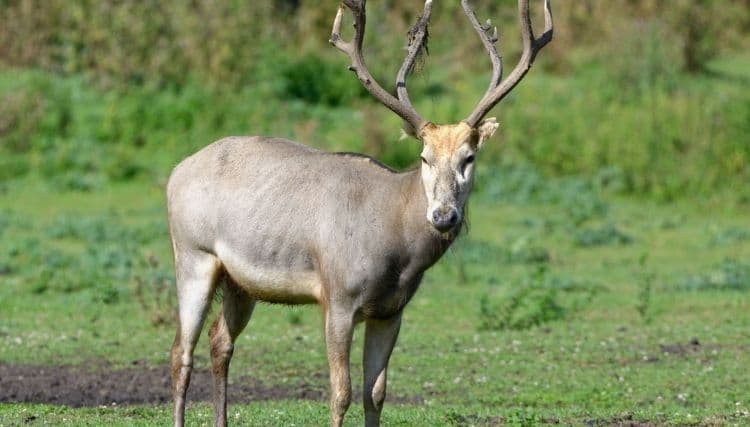
If you’ve ever wanted to know all there is to know about Pere David’s Deer, then this guide is for you.
What is Pere David’s Deer?
Pere David’s deer (Elaphurus davidianus), also known as milo, is a species of deer native to China. It is named after the French missionary and naturalist Armand David, who first described the species in the late 19th century.
The Pere David’s deer has a distinctive appearance, with a large, stocky body and a short tail. It has long antlers with up to eight points, which are shed annually. The deer’s coat is reddish-brown in the summer and gray-brown in the winter.
In the wild, the Pere David’s deer was once found in the wetlands and river valleys of central and southern China. However, due to habitat loss and hunting, the species became extinct in the wild in the early 20th century.
Today, Pere David’s deer only exist in captivity or semi-captive populations. It is considered a conservation success story, as the species was brought back from the brink of extinction through captive breeding programs in China and around the world.
What is Pere David’s Deer Size?
Pere David’s deer is a large species of deer, with males (stags) typically larger than females (hinds). Stags can grow to a shoulder height of around 1.4 meters (4.6 feet) and weigh up to 200-250 kilograms (440-550 pounds), while hinds are slightly smaller, with a shoulder height of around 1.2 meters (3.9 feet) and a weight of up to 140-170 kilograms (300-375 pounds).
Where Are Pere David’s Deer Found?
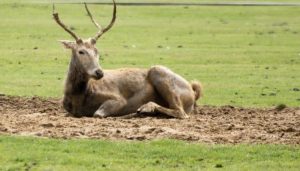
Pere David’s deer (Elaphurus davidianus) is no longer found in the wild. It was once native to China, specifically in the lowlands and river valleys of central and southern China. However, due to habitat loss and hunting, the species became extinct in the wild in the early 20th century.
Today, the species only exist in captivity or semi-captive populations in various parts of the world, including China, Europe, and North America. The largest population of Pere David’s deer is found in Dafeng Reserve in China, where individuals from captive populations were reintroduced into the wild in the 1980s.
Pere David’s Deer Conservation Status
Pere David’s deer (Elaphurus davidianus) is currently classified as “Endangered” on the IUCN Red List of Threatened Species.
The species was brought back from the brink of extinction through captive breeding programs, which were initiated in China in the early 20th century. Since then, the deer have been reintroduced into semi-natural habitats in several locations in China and various other parts of the world, including Europe and North America.
Despite these conservation efforts, Pere David’s deer still faces threats such as habitat loss, hunting, and genetic issues due to inbreeding in captive populations. Therefore, continued conservation efforts, including habitat protection and breeding programs, are necessary to ensure the survival of the species in the long term.
What is the Pere David’s Deer Habitat?
Pere David’s deer (Elaphurus davidianus) is native to the wetlands and river valleys of central and southern China. The deer’s natural habitat is characterized by grassy plains, riverine forests, and wetlands, including marshes, swamps, and lakes.
In the wild, Pere David’s deer lived in small herds in areas with access to water, and they would migrate to higher ground during the rainy season to avoid flooding. They were also known to graze on grasses and aquatic plants.
Today, the species only exist in captivity or semi-captive populations. These populations are typically found in zoos, wildlife parks, and reserves, where the deer are provided with suitable habitats that mimic their natural environment. Efforts have also been made to reintroduce the deer into semi-natural habitats in various parts of China and around the world.
What is The Physical Description Of Pere David’s Deer?
Pere David’s deer (Elaphurus davidianus) has a distinctive physical appearance. It is a large and stocky species of deer, with a short tail and long, branching antlers that are shed and regrown annually. Here are some of the physical characteristics of the species:
- Body size: Pere David’s deer is a large deer, with males (stags) typically larger than females (hinds). Stags can grow to a shoulder height of around 1.4 meters (4.6 feet) and weigh up to 200-250 kilograms (440-550 pounds), while hinds are slightly smaller, with a shoulder height of around 1.2 meters (3.9 feet) and a weight of up to 140-170 kilograms (300-375 pounds).
- Coat color: The deer’s coat is reddish-brown in the summer and gray-brown in the winter. The coat is thick and coarse, with a mane of longer hair on the neck and shoulders.
- Head: The head of Pere David’s deer is relatively large and has a distinctive concave profile. The ears are large and rounded, and the eyes are relatively small.
- Antlers: The deer’s antlers can grow up to 1.2 meters (4 feet) in length and have up to eight points. They are shed and regrown annually.
- Hooves: The deer’s hooves are large and broad, with a split or cloven appearance.
Overall, Pere David’s deer has a unique appearance that sets it apart from other species of deer. Its distinctive physical features have made it a popular subject of study and conservation efforts.
Pere David’s Deer Reproduction -Breeding
Pere David’s deer (Elaphurus davidianus) typically breed during the fall season, which is also known as the rutting season. During this time, male deer compete for access to females, and dominant males will mate with multiple females.
The gestation period for Pere David’s deer is approximately 8 months, and females typically give birth to a single fawn. The fawn is born with a spotted coat, which helps it blend into its surroundings and avoid predators. The mother will care for the fawn and nurse it until it can eat solid food.
How Long Does A Pere David’s Deer Live?
Pere David’s deer (Elaphurus davidianus) can live up to 20 years in captivity, although their lifespan in the wild is not well documented.
Factors that can affect the lifespan of Pere David’s deer include their access to food and water, the quality of their habitat, and their exposure to predators and other threats. In captivity, Pere David’s deer can benefit from regular veterinary care, a consistent supply of food and water, and protection from predators, which can contribute to a longer lifespan.
In addition, genetic factors can also play a role in the lifespan of Pere David’s deer. Captive populations of deer have experienced some degree of inbreeding, which can increase the risk of genetic disorders and other health problems. To combat this, breeding programs typically focus on maintaining genetic diversity within captive populations, which can help to reduce the risk of health issues and promote a longer lifespan for the deer.
Pere David’s Deer Communication And Perception
Pere David’s deer (Elaphurus davidianus) uses a variety of communication methods to interact with other deer and perceive their surroundings. Here are some of the ways that Pere David’s deer communicates and perceives:
-
Vocalizations: Pere David’s deer uses a range of vocalizations to communicate with other deer, including grunts, bleats, and snorts. These vocalizations can convey a variety of messages, such as warnings of danger or signals of aggression.
-
Body language: The deer also uses body language to communicate, including ear position, tail position, and stance. For example, a deer with its ears pricked forward and its tail up may be alert and attentive, while a deer with its ears back and its tail down may be indicating submission.
-
Sense of smell: Like many other animals, Pere David’s deer has a strong sense of smell that it uses to detect predators, locate food and water, and communicate with other deer. The deer has scent glands on its feet, legs, and forehead, which it uses to leave scent marks on trees and other objects.
-
Vision: The deer has relatively good eyesight, which it uses to detect movement and identify potential threats. Its eyes are positioned on the sides of its head, giving it a wide field of vision, but reducing its depth perception.
Overall, Pere David’s deer uses a combination of vocalizations, body language, and sensory perception to communicate and perceive its environment. These abilities are critical for the deer’s survival in the wild, and they also play a role in social interactions and breeding behavior.
What Does Pere David’s Deer Eat?
Pere David’s deer (Elaphurus davidianus) is a herbivorous animal, which means it feeds mainly on plant material. In the wild, the deer’s diet consists of a variety of grasses, herbs, and aquatic plants, which it grazes on in open fields and wetland areas.
In captivity, Pere David’s deer are typically fed a diet that mimics its natural diet in the wild. This diet typically consists of high-quality hay or grass, along with fresh vegetables and fruits such as carrots, apples, and beets. Deer pellets or other commercially available herbivore feeds may also be provided to ensure that the deer receives all the necessary nutrients.
Pere David’s deer has a unique adaptation that allows it to digest tough, fibrous plant material more efficiently. The deer has a four-chambered stomach, which allows it to break down and ferment its food more effectively, extracting more nutrients from the plant material. This adaptation helps the deer to thrive on a diet of tough, fibrous plants, which would be difficult for many other herbivores to digest.
Pere David’s Deer Anti-predator Adaptations
Pere David’s deer (Elaphurus davidianus) has several anti-predator adaptations that help it avoid or defend against potential predators. Here are a few of the adaptations:
-
Vigilance: Pere David’s deer is a highly vigilant species, and individuals are constantly scanning their surroundings for potential threats. They may use their sense of smell, sight, and hearing to detect predators and other dangers.
-
Camouflage: The deer’s coat coloration and markings help it to blend into its surroundings and avoid detection by predators. The deer’s summer coat is reddish-brown with white spots, while its winter coat is greyish-brown.
-
Running: Pere David’s deer is a fast and agile runner and can reach speeds of up to 43 miles per hour when pursued by predators.
-
Group living: The deer often lives in groups, which can help to deter predators and improve the chances of detecting potential threats. In addition, group members may work together to defend against predators.
-
Alarm calls: Pere David’s deer may emit loud snorts or bleats to alert other members of the group to the presence of predators or other dangers.
-
Swimming: The deer is also an excellent swimmer, and may use water as a means of escaping from predators or avoiding detection.
Overall, Pere David’s deer has a range of adaptations that allow it to avoid or defend against predators in the wild. These adaptations are critical for the deer’s survival, particularly given the threats posed by predators such as wolves, foxes, and large cats.
What is Pere David’s Deer Role İn The Ecosystem?

Pere David’s deer (Elaphurus davidianus) plays an important role in the ecosystem as a herbivorous species. As a grazer, the deer helps to control the growth of grasses and other vegetation, which can prevent the overgrowth of certain plant species and maintain a healthy balance in the ecosystem.
In addition, Pere David’s deer is an important prey species for a variety of predators, including wolves, foxes, and large cats. By providing a food source for these predators, the deer helps to support the broader food web and maintain a healthy balance of predator and prey species.
Pere David’s deer has also played a role in conservation efforts in China, where it is considered a symbol of conservation and biodiversity. The deer’s reintroduction to the wild has helped to restore degraded wetland habitats and promote biodiversity in the region.
Overall, Pere David’s deer plays a valuable role in the ecosystem as a herbivorous grazer and an important prey species. Its conservation and reintroduction efforts have helped to support the broader ecosystem and promote biodiversity in the regions where it lives.
How Fast a Pere David’s Deer Run?
The Pere David’s deer can run up to 70 kilometers an hour or about 43 miles per hour.
How Many Pere David’s Deer Are Left İn The World?
At one point, Pere David’s deer (Elaphurus davidianus) was extinct in the wild, with the only remaining individuals being kept in captivity in China and Europe. However, thanks to reintroduction programs, the species has been successfully reintroduced to several areas in China.
According to the International Union for Conservation of Nature (IUCN) Red List, as of 2021, the population of Pere David’s deer in the wild is estimated to be around 2,000 individuals, with the majority of these individuals occurring in China. However, some of these populations are not yet self-sustaining and require ongoing conservation efforts to ensure their long-term survival.
Overall, while the population of Pere David’s deer has increased significantly in recent years, the species is still considered to be endangered, and continued conservation efforts are needed to protect the remaining individuals and their habitats.
Referans: Saving the Père David’s Deer
Why is Pere David deer perish in China?
The Pere David’s deer was once found only in China along the central and lower Yangtze River basin. But, years of overhunting and loss of its wetland habitat due to reclamation led to the extinction of this species.
What happened to Pere David’s deer?
The Pere David’s deer was a species of deer that once had a wide range of distribution in the eastern and south-eastern parts of China, but has been driven to extinction by the 1950s.
Today, there are only about 100 living in zoos.
How many Pere David deer are left?
Pere David deer are considered to be extinct in the wild. There are less than 2000-2500 left in the world, but they are kept safe in zoos and breeding centers.
How did the Pere David deer discover in China?
In 1867, a French missionary named Pere David came across some strange-looking deer with small antlers near Beijing, which he believed to be of the Cervus davidianus species from India. After examining the animal’s body closely and comparing it with other animals nearby, he realized that they weren’t Indian elk at all but a new species altogether- Pere David deer.
Why is the Pere David deer called Pere David deer?
The Pere David deer was only found by one person, a French missionary named Father Armand David. He happened to see this animal when he went on a hunting trip in Tibet in 1866. He brought it back to Europe in 1869 and named it in honor of himself, Pere Armand David.
When was Pere David deer first known to the world?
The Pere David deer were first known to the world in 1867. The story starts with a French missionary priest named Father Armand David, who was an avid hunter and horticulturist. He came across this small species of deer (Rucervus eldi) on his travels in China and took them back to France. These animals were then bred in captivity and became known as the Pere David Deer.
Who discovered the Pere David deer?
The Pere David deer is a deer that was originally found in China and was introduced to Europe by the Pere David, who caught them during his travels.
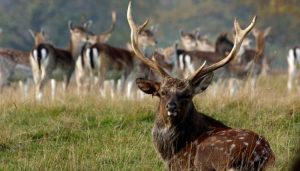
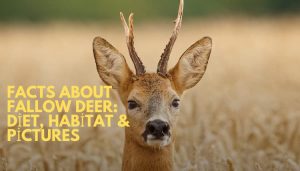
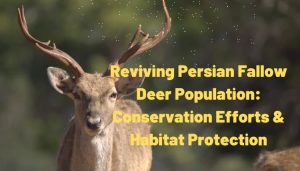
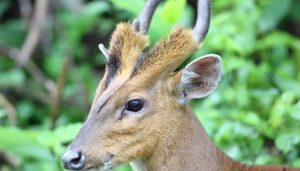
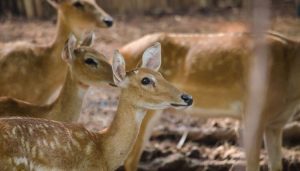
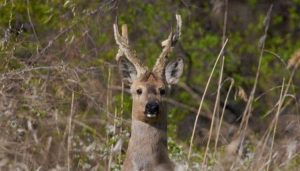
Leave a Reply